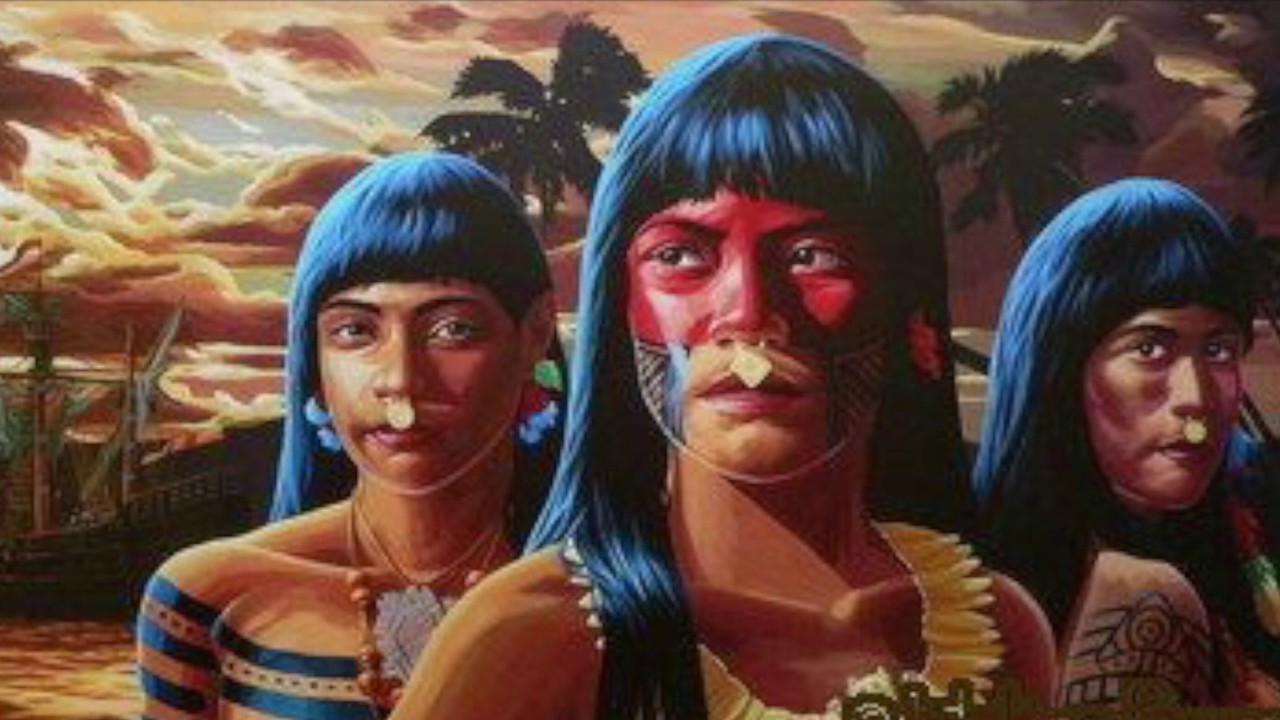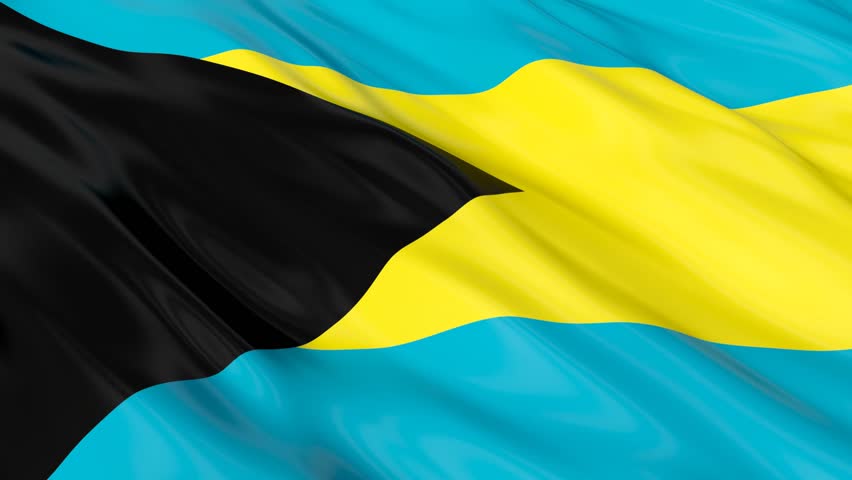Population: 389 500 (2019)
Area: 13 880 km²
Capital City: Nassau
Currency
Bahamian dollar

The dollar has been the currency of The Bahamas since 1966. It is normally abbreviated with the dollar sign $, or alternatively B$ to distinguish it from other dollar-denominated currencies. It is divided into 100 cents.
Climate
The Bahamian climate usually mild throughout the year, is one of the great attractions of the area. The average temperature varies from the low 70s F (about 21 °C) during the winter to the low 80s F (about 27 °C) during the summer, and extremes seldom fall below the low 60s F (about 16 °C) or rise above the low 90s F (about 32 °C). The average annual rainfall is about 44 inches (1,120 mm), occurring mostly during the summer months. Prevailing winds, coming from the northeast in winter and from the southeast in summer, lend a cooling influence to a generally humid atmosphere. Tropical cyclones (hurricanes) pose a threat during the period from June to November and have occasionally caused great destruction.

Language
English is the official language and is widely spoken. The English spoken is known as Bahamian English, which is a product of British English coupled with rich linguistic influences, rooted in the African languages of the slave trade. The language has also been shaped by diverse settlers and British colonialism. Haitian Creole is also spoken but common among the Haitian population. The Bahamian Creole is considered as the vernacular language of the Bahamas. This means that this is the language used for informal conversations among the islanders.
Economy
The economy of The Bahamas is dependent upon tourism and offshore banking. The Bahamas is the richest country in the West Indies and is ranked 14th in North America for nominal GDP. It is a stable, developing nation in the Lucayan Archipelago with a population of 391,232. Steady growth in tourism receipts and a boom in construction of new hotels, resorts, and residences had led to solid GDP growth for many years, but the slowdown in the US economy and the attacks of September 11, 2001 held back growth in these sectors in 2001–03. Financial services constitute the second-most important sector of the Bahamian economy, accounting for about 15% of GDP. However, since December 2000, when the government enacted new regulations on the financial sector, many international businesses have left the Bahamas. Manufacturing and agriculture together contribute approximately 10% of GDP and show little growth, despite government incentives for those sectors. Overall growth prospects in the short run rest heavily on the fortunes of the tourism sector, which depends on growth in the US, the source of more than 80% of the visitors. In addition to tourism and banking, the government supports the development of a "2nd-pillar", e-commerce.
Education
Until the middle of the 19th century, education in Bahamas was only available children of white families. Christian missionary schools provided public education at the end of the 19th and beginning of the 20th century. Today education is Bahamas is open to its entire population. There are more than 200 schools in Bahamas, most of them funded and led by the government through the Ministry of Education. Also, there are private schools established by various religious orders. Education in Bahamas is compulsory from ages 5 to 15. The education system is based on the traditional British model. Students go through several levels, which are:
6 years in primary school (from age 5 to 11 years old).
3 years of junior high school (from age 12 to 15 years old).
2 years senior high school (from age 16 to 18 years old).
There are a number of private vocational schools for adults.
The University of Bahamas was established in 1974 and offer bachelor programs. Students can transfer to affiliated schools in other countries, such as Great Britain, United States and Canada. They can finish 2 additional years of education in any of the abovementioned country.
President, Parliament and Government
The prime minister of the Bahamas is the head of government of the Bahamas, currently Hubert Minnis. Minnis, as leader of the governing Free National Movement party, He was sworn in as Prime Minister on 11 May 2017, succeeding Progressive Liberal Party leader Perry Christie. This was a result of the FNM's victory in the Bahamas general election of 10 May 2017. The prime minister is formally appointed into office by the governor general of the Bahamas, who represents Elizabeth II, the queen of the Bahamas.
Culture
The Bahamas has a distinct culture which has evolved over generations, from a mixture of mostly African, combined with some British and American influences, which developed into a unique and colourful style of Bahamian self-expression.
Bahamians are best described as easy-going, friendly and hospitable. The adult literacy rate, in The Bahamas, is over 90% and the country has experienced a rapid growth in the professional class and university educated workforce. English is the official language of The Bahamas, with a local dialect called ‘Bahamianese or Bahamian Dialect’ being spoken colloquially.
Bahamians are deeply religious and Christianity is the predominant religion practised in the country. However, the Bahamian Constitution guarantees freedom of expression.
The Bahamas has three indigenous forms of music and dance: Goombay, Rake ‘n’ Scrape, and Junkanoo.
‘Goombay’ music can be considered to be among the earliest indigenous forms of Bahamian music that originated with its Afro-descendant population in the form of a drumbeat rhythm and was the style used by many early Bahamian musicians and composers like Blind Blake, George Symonette and Eloise Lewis.
‘Rake and Scrape’ has its origins in the family island of Cat Island where it developed as a hybrid form from European and African music cultures. It is a popular folk music form among Bahamians and has been used as a classical folk form for various traditional folk musicals, folk plays, and folk operas by various Bahamian composers. It is, also, used as an accompaniment for the ‘quadrille, plaiting of the maypole and other folk dance forms’ .
Nothing is more indigenous and unique to Bahamian culture than Junkanoo. It is a music and dance form that originated in The Bahamas during the days of slavery. A festive parade complete with colourful costumes, goatskin drums, clanging cowbells, whistles and horns, it has remained remarkably unchanged over the years. The parade progresses in a low, rhythmic dance called ‘rushing’. Traditionally, the festival is held in the early hours of Boxing Day (26 December) and on New Year’s Day, winding up at sunrise. The paraders ‘rush’ in organised groups and are judged on costume theme and performance in a keen competition which captures the spirit of all Bahamians at this very special time of the year.
Health
Health standards have greatly improved throughout the Bahamas in recent years. New hospitals and healthcare facilities have opened in Nassau and Grand Bahama.
There are high levels of health and economic inequality and most of the population are unable to obtain private health insurance. Catastrophic spending on healthcare has bankrupted many patients and their families.
Safety
Bahamas safety is achievable for tourists, as long as they take the time to become familiar with potential threats and use the proper precautions. Travelers can avoid petty crimes such as pickpocketing and credit card fraud, for example, by keeping valuables well-hidden and keeping an eye on their credit cards at all times.
Do's and Don't
DON’T go wandering alone at night. Like any other city in the world, keep your guard up.
DON’T forget when you are driving to stay on the left side of the road.
DON’T spend all your money, you will need $15.- for departure tax at the airport when leaving the Bahamas.
DON’T leave without sampling Bahamian cocktails-Bahama Mama, Bahama Papa & Bahamian Delight.
DON’T climb the coconut trees to get your own coconuts, though.
DON’T miss ‘Junkanoo’-Boxing Day & New Year’s Day every year.
DON’T miss native fruit, such as: sour sop, sea grapes, sugar apples, mangoes & sappadillies.
DON’T miss the water sports-diving, snorkeling, parasailing, banana boat ride, etc.
DON’T wear your watch while visiting. It doesn’t matter what time it is!
DON’T leave without going beachcombing for seashells.
DON’T be afraid to try local delicacies-souses, smothers and boils. Everything friedis good!
Transport
There are several options to help you get around. Whether you choose to travel via water taxi or a horse-drawn surrey, you’re guaranteed a pleasant and safe ride. Rental cars, motor scooters, buses and taxis are the most common means of public transportation. Bicycles are not generally available for rental, but can be found at many resorts.
Bahamas Ferries
Created in 1999, Bahamas Ferries has been dedicated to providing much needed ferry connections between the smaller islands in the Bahamas. With the use of sustainable technology, and a deep understanding of the local cultures and what they need, the ferries provided by Bahamas Ferries have become an integral part of life in the Bahamas, connecting many of the smaller islands and communities with comfortable and safe ferry experiences.
Cuisine
Bahamian Cuisine is to the foods and beverages of The Bahamas. It includes seafood such as fish, shellfish, lobster, crab, and conch, as well as tropical fruits, rice, peas, pigeon peas, potatoes, and pork. Popular seasonings commonly used in dishes include chilies (hot pepper), lime, tomatoes, onions, garlic, allspice, cinnamon, rum, and coconut.
While you're onshore visiting a port on a Caribbean cruise, take in the tastes of local Bahamian cuisine. You'll come back feeling energized and new.
 |  |  |  |














